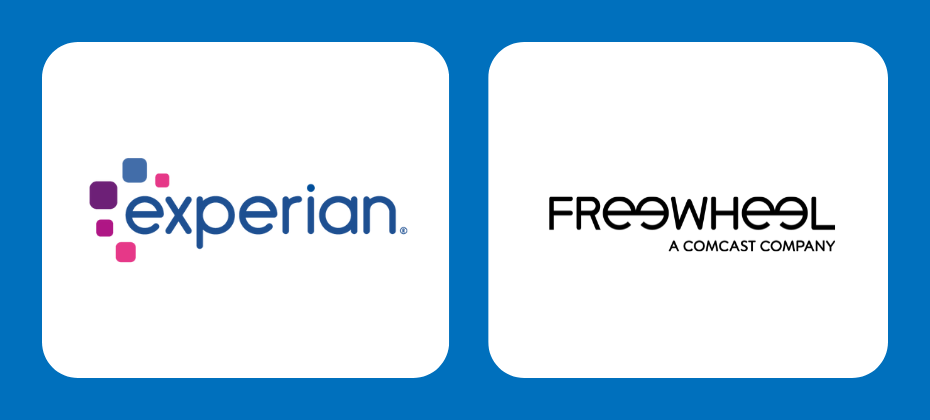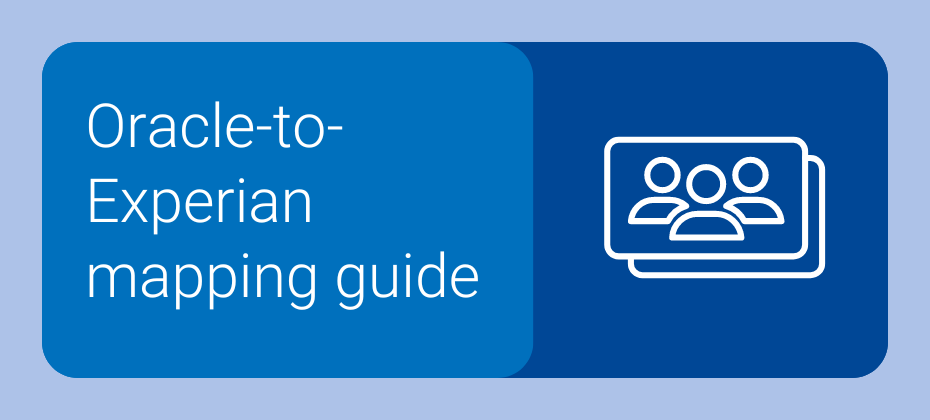At A Glance
As CTV viewership grows, marketers face challenges in targeting and measurement across fragmented platforms. Identity resolution and audience strategies, supported by Experian’s syndicated audiences and privacy-safe solutions, help DSPs and advertisers reach high-value audiences, improve campaign accuracy, and drive measurable outcomes.In our Ask the Expert Series, we interview leaders from our partner organizations who are helping lead their brands to new heights in AdTech. Today’s interview is with George Castrissiades, General Manager of Connected TV at AdRoll.
Premium reach and fragmentation
As viewer attention fragments across platforms, how should marketers redefine “premium reach” in CTV to prioritize engagement and audience quality over scale alone?

A few years ago, ad supported streaming over-indexed on younger adults, those without much financial history and much more budget conscious. It would have been fair for B2B brands to assume that maybe they weren’t going to find their C-Suite audiences on those channels, and so connected TV(CTV) was positioned as a top of funnel tactic aimed at retail. But that’s all changed – ad-free prices are going up, and ad supported tiers are the norm across the majority of channels. 66% of adults have at least one ad supported streaming channel, and adults today spend nearly as much time streaming movies and TV as they spend on their mobile phones. Now that ad viewing audiences on CTV really span the full spectrum of demo, techno, and firmographic segments, savvy marketers should partner with platforms that offer breadth and depth of targeting and measurement to find the highest value audiences wherever they’re watching CTV and serve them highly relevant ads that draw their attention towards the screen. I know I’m jumping out of my seat whenever I see an AdTech or MarTech ad.
Identity and relevance
What does a strong identity framework unlock for delivering household- and person-level relevance across screens, and how does it reshape audience planning?

In privacy-safe ecosystems, people want to share less data and log in to websites and browsers less frequently. If you can’t resolve a household ID to a CTV device through Safari and other sources of obfuscated identity, you’re going to end up losing a lot of signal along the way. On top of that, targeting smaller, higher-value audiences means this attrition can have a profound impact on your ability to build meaningful reach and use audience forecasts to predict scale. A strong identity framework is the key to maintaining as much of your planned audience as possible and staying true to initial forecasts.
AI and outcome planning
How is AI evolving CTV from tactical bidding to strategic outcome planning, and what mechanisms are in place to validate true performance lift?

Tomorrow isn’t guaranteed, especially not in advertising. Audiences change where and when they consume media, and so shifting budget to a placement that did well yesterday is like buying a stock when it’s outperforming – the gains might be gone by then! Predictive AI is bridging the gap to find the highest value and most engaged audiences in real time, versus being purely reactive. This helps drive outcomes which we see in the form of pipeline influence, ROAS, and site traffic lift – without exponentially increasing costs. The same is true for account-based marketing(ABM) outcomes – there’s a blend of signals, account “fit” and intent data that needs to be evaluated in a deeper, more intelligent way. AI is helping to find those highest value accounts, even before they’re in market, which means smart marketers aren’t showing up late to the party.
Measurement and incrementality
What privacy-safe, closed-loop measurement frameworks should become standard to prove incremental visits and sales from CTV campaigns?

Working with a dedicated multichannel, full-funnel ad and marketing platform like AdRoll can easily let you know when a user arrives at your site and makes a purchase, but understanding how that customer arrived there and which tactics deserve the credit requires a deeper, more sophisticated workflow. Our partnership with Experian allows all devices in a household to ladder back up to a household ID, so we can ensure accuracy without pivoting on anything personally identifiable. This works perfectly in CTV, an environment that follows an app workflow of user resettable device IDs rather than IP address or email but always connects seamlessly to web tokens including cookies. Accuracy, scale, and privacy are maintained in a proven way – you see this tech underpinning the infrastructure of streaming across all the biggest players, so marketers can rest easy.
Creative and commerce
How can creative sequencing and shoppable TV experiences convert living-room attention into commerce without compromising user experience or feeling intrusive?

I like to say that CTV trades attention for action. Users lean back and focus on the messaging and visuals of the big screen rather than scrambling for the mouse or tapping to close some intrusive pop-up. This focus means that the messaging is absorbed more quickly, but creatives can wear out their welcome just as fast. Sequential messaging really helps to move the messaging along without subjecting the viewer to longer ads where attention wanes, but also increases brand recall and specific product information because the story evolves with each impression. This is a great tactic to use when you want a viewer to take a specific action later – but shoppable ads can help motivate a user to act now, and new formats can really simplify things. Shoppable can feel out of range for most – the top players in this space own major e-comm storefronts and then tie them back into their own demand-side platforms (DSPs), content, and streaming devices. For the rest of us, dipping our toes in slowly through simple and cheap solutions like QR codes can connect audiences right to a web experience from their TVs, or intermediate solutions like interactive video ads. Users love to play around with fun on-screen experiences, and there’s a whole spectrum of crawl/walk/run options available.
Trust and governance
Which shared guardrails—brand safety, fraud control, and frequency management- are essential to unlocking sustainable, scaled investment in CTV?

I’ve always thought of CTV inventory analogously to high-end watches – if you buy from the source or a well-known, reputable dealer, you’re probably buying the real thing. But that fancy timepiece the guy was selling outside the bar, that you swore looked real? Probably not. Untrusted resellers and too-good-to-be-true pricing might mean you’re running ads on a screen at a lonely gas station at 3 am to an audience of no one, and that’s not even the worst case scenario. Good relationships and deep pockets can solve brand safety and fraud issues, but not every advertiser is going to have those resources. Brand safety and fraud prevention can reduce workload and help distinguish the good stuff from the growing pool of gray area, arguably, CTV inventory that isn’t what was promised to a customer. Outsourcing this trust also goes a long way, with buyers knowing you’re not grading your own homework. Frequency management is equally as important. Once you have your audience and your good supply, it’s important not to abuse a single household just because they meet your targeting criteria. Reach is your best friend with CTV.
Data and audience strategy
How do Experian’s syndicated audiences provide a consistent, scalable foundation for planning, activation, and measurement across CTV and digital, and what outcomes are clients seeing?

We love to talk about how Experian’s data is such an integral part of so much of streaming’s architecture, and the fact that it’s built on deterministic datasets means you’re getting scaled audiences built on knowledge rather than best guesses. That means a lot when working across multiple channels, privacy-safe environments, and households with an ever-growing number of connected devices. Our customers are always delighted at how precise targeting can be, especially in the B2B/B2C space – and knowing the size of those audiences helps them to understand how budget transforms into reach in a more predictable way. It’s confidence-inspiring to point to a new audience and tell your client that these are their future customers. The best part is showing them the outcomes reporting – we consistently see a massive spike in site traffic and engagement on days when a new Experian syndicated audience is launched!
Contact us
FAQs
Identity resolution ensures marketers can connect devices and maintain audience accuracy. Experian’s identity solutions help reduce data loss and improve audience forecasts, making campaigns more effective.
With viewer attention spread across platforms, marketers need tools that offer both broad and detailed targeting. Experian’s syndicated audiences provide reliable, scalable data to help identify and reach high-value audiences across channels.
Techniques like sequential messaging and shoppable ads keep viewers engaged and encourage action. Simple tools like QR codes or interactive video ads can connect audiences to web experiences directly from their TVs.
Strong identity frameworks help DSPs maintain accurate targeting and audience reach, even in privacy-focused environments. By connecting devices to household IDs, solutions like Experian’s Digital Graph ensure DSPs can deliver relevant ads and measure performance effectively across channels.
About our expert

George Castrissiades
General Manager of Connected TV, AdRoll
George leads the CTV go-to-market strategy at NextRoll, driving rapid growth and adoption of the channel for both B2B and B2C customers. With a track record of building and scaling CTV solutions, he is focused on developing a strategic playbook that accelerates success in the evolving digital advertising landscape.
Before joining NextRoll, George spearheaded CTV product innovation at iSpot.tv and held leadership roles in product and operations at YouTube, VICE Media, Crackle, Roku, and Innovid. His expertise spans product development, monetization, and market expansion.

About AdRoll
AdRoll is a connected advertising platform built for growth-minded marketers. With powerful AI, flexible campaign tools, and seamless integrations, AdRoll helps mid-sized businesses turn complexity into clarity and clicks into customers. The AdRoll platform delivers full-funnel performance through multi-channel advertising, audience insights, and cross-channel attribution, supporting marketers across industries including ecommerce, technology, financial services, education, and more. For B2B teams, AdRoll ABM extends these capabilities with account-based precision, multi-touch campaigns, and real-time buyer intelligence. Backed by nearly 20 years of data and award-winning support, AdRoll enables marketing teams to advertise smarter, move faster, and achieve more, all from one place.
Latest posts

Ditch the cookie, not the data with the next evolution of contextual targeting Today, we're excited to announce Contextually-Indexed Audiences, a game-changer in contextual targeting. Experian’s new solution offers advertisers a powerful, privacy-safe solution that combines the precision of deterministic audience targeting with the flexibility of contextual targeting. Powered by real-time analysis from two million websites, access to 1,400 trusted audience segments, and easy activation through the top demand-side platform’s contextual marketplace or Audigent private marketplaces (PMPs), this solution offers advertisers a scalable way to reach their target consumers. With this solution, advertisers can reach consumers on websites that over-index for visitors with the demographics, behaviors, or interests, they are looking to target. For example, an automotive brand can select Experian’s “Contextually-indexed in-market for a luxury electric car” audience segment and reach consumers when they are browsing websites that often attract that exact segment. Best of all, this is done in a privacy-safe way since it’s not reliant on cookies, mobile ad IDs (MAIDs) or other user identifiers. How Contextually-Indexed Audiences work Contextually-Indexed Audiences harness advanced machine learning technology to move beyond traditional keyword-based strategies. The solution works in three steps: First, it analyzes traffic from over two million websites and mobile apps to identify the types of frequent visitors to those platforms. Next, using Experian’s Digital Graph, it resolves the identities of those visitors and maps them to more than 1,400 of Experian’s Syndicated Audiences, determining which audiences are most overrepresented on each site. Finally, the relevant audiences are assigned to those sites, allowing advertisers to deliver ads to people in those audiences while they are actively browsing the websites — without relying on user identifiers. Customer success story A leading auto manufacturer was among the first clients to activate this new solution while we were in beta. The goal was to identify new contextual targeting solutions that focus on privacy while maintaining scale and performance. The client identified two key target audiences: first-time vehicle buyers and experienced buyers. The initial campaigns using this new solution were highly successful. Even as the campaign scaled to twice the original volume, it continued to deliver three times the targeted click-through rate (CTR) goal. “Partnering with industry leaders like Experian, we're pushing the boundaries of contextual targeting with innovative data strategies that offer buyers greater flexibility and improved performance. These advanced contextual solutions are exciting as they not only drive results but also have the same privacy safeguards as traditional contextual targeting.”Matt Griffith, CTO & Co-Founder, Audigent Benefits of Contextually-Indexed Audiences Accurate consumer reach: Real-time integrations with over two million websites and apps coupled with machine-learning indexing technology ensure audience segments are constantly refreshed, which means advertisers reach consumers based on their latest habits. Privacy-safe audience targeting: These audiences are not reliant on cookies or any other user identifiers for targeting. Audience customization: Create the right audience segment for your campaign by using a combination of over 1,400 audiences across 12 data categories like demographics, politics, health, travel, finance, and TV. Flexible activation: Activate these audiences instantly in the top demand-side platform’s contextual marketplace or utilize our partnership with Audigent to create a custom private marketplace (PMP), where they can be activated across any media buying platform. When using a PMP, advertisers benefit from additional performance optimization capabilities. Experian’s Contextually-Indexed Audiences offer advertisers a powerful solution that combines the precision of audience targeting with the flexibility of contextual targeting. With real-time analysis of over two million sites and access to 1,400 trusted audience segments, advertisers can reach consumers based on their exact behaviors and interests. This is done in a privacy-safe, yet scalable way since it’s not reliant on cookies or other user identifiers. Whether activating instantly through the top demand-side platform or customizing through Audigent PMPs, this is the future of audience targeting. Ditch the cookie, not the data, and elevate your strategy today. Contact us Latest posts

Experian is excited to announce that Experian Audiences are now accessible on FreeWheel, a global technology platform for the TV advertising industry. This includes FreeWheel’s leading sell-and-buy-side programmatic advertising platforms, which provide premium inventory for digital and TV campaigns. With Experian Audiences available within FreeWheel, advertisers can access the data they need to create and activate high-impact, targeted, and personalized campaigns across linear, digital, and advanced TV. Unlock unmatched audience precision With this integration, FreeWheel customers gain access to Experian's syndicated audiences powered by Experian Marketing Data. Experian offers 2,400 ready-to-use audiences across 15 data verticals, including demographic, lifestyle and interests, retail purchases, and auto. Backed by a deep understanding of people in the offline and digital worlds, Experian's data is ranked #1 in accuracy by Truthset, giving advertisers confidence that they are reaching the right people. “With the expansion of our collaboration with FreeWheel, we're enabling digital and television advertisers to access Experian Audiences with unprecedented ease. This integration equips brands with ready-to-use audiences, allowing them to build highly personalized campaigns that precisely reach the right consumers. This helps drive measurable impact and improves the effectiveness of brands' advertising strategies.”ali mack, vp of adtech, experian Publishers using Audience Manager, FreeWheel’s audience-enabled solution, can unify audiences across devices and ad types, including linear, through the FreeWheel Identity Network. Advertisers using Beeswax, FreeWheel’s demand-side platform (DSP), can target these audiences across multiple devices and platforms to ensure their campaigns resonate and deliver better results. Whether advertisers are targeting holiday shoppers or in-market car shoppers, Experian's data ensures campaigns are timely, relevant, and effective. Boost your campaigns with targeted audience solutions When it comes to capturing the interest of car buyers or connecting with valuable holiday shoppers, our collaboration provides audience targeting to ensure a marketer's message hits home when it counts. Capture TV viewers at the right moment. Developed in partnership with the Advertising Research Foundation (ARF), Experian's TV viewership audiences allow advertisers to reach households based on actual viewing habits, from how a household consumes TV to the brand of TV they own. Drive auto sales with in-market targeting. Reach in-market and near-market car buyers to support vehicle launches and end-of-year promotions, ensuring advertisers’ messages hit consumers actively looking for a vehicle. Maximize retail success during the holiday. The holiday shopping season presents an ideal opportunity to capture attention, drive sales, and build lasting customer relationships. Experian can help you capitalize on the holiday season with precisely targeted audiences, including shopping styles, discount-seekers, gift-givers, and holiday travelers. Transform your campaigns with Experian Audiences With Experian Audiences available in FreeWheel’s platforms, advertisers can access the data they need to create high-impact campaigns across TV and digital platforms. Whether your goal is to drive sales during the holiday season or reach in-market car shoppers, Experian's trusted data ensures you'll reach the right audience at the right time with the right message. For a full list of Experian’s syndicated audiences and activation destinations, download our syndicated audiences guide. Download now Contact us Latest posts

As Oracle exits the advertising space, we understand that this may present a challenge. Experian is here to support you with a seamless transition in your audience targeting. As one of Oracle’s primary data providers that powered their audiences, we’ve mapped Oracle audiences to Experian audiences, helping you to switch your audience targeting with no impact on your campaign’s performance. In this blog post, we highlight four audience categories that we know marketers are actively seeking to replace and target: auto, restaurants, lifestyle and interests, and demographics. Experian’s approach to best-in-class audience targeting Experian’s 2,400+ syndicated audiences are available directly on over 30 leading television, social, programmatic advertising platforms, and directly within Audigent for activation within private marketplaces (PMPs). Reach consumers based on who they are, where they live, and their household makeup. Experian ranked #1 in accuracy by Truthset for key demographic attributes. Access to unique audiences through Experian’s Partner Audiences available on Experian’s data marketplace, within Audigent for activation in PMPs and directly on platforms like DirectTV, Dish, Magnite, OpenAP, and The Trade Desk. Experian’s audience solutions are rooted in offline, deterministic data — like name, address, phone number, and email — that rarely changes. Our deep understanding of people in the offline and digital worlds provides marketers a persistent linkage of known offline data and digital identifiers, which means you get accurate and consistent audience targeting across all channels. Auto, Cars, and Trucks As the premier auto partner contributing to Oracle auto segments, Experian can help you reach and target consumers based on their known and predictive auto shopping behaviors. Experian’s auto audiences are built utilizing insight from our North American Vehicle Database℠ and other data attributes from Experian Marketing Data to provide highly accurate audiences for digital and TV advertising. Unlike some of our competitors who are also positioning themselves as a replacement audience provider, Experian owns all our Vehicle, Consumer, and summarized Credit data under one umbrella and refreshes our audiences every 30 days. This ensures tighter audience composition, superior data hygiene, and best in-class data fidelity, which means you get to target the most accurate audiences. With over 750 syndicated audiences segmented by make, model, price, vehicle age, fuel type, and more, our data is accessible through Experian’s distribution power across all platforms — digital, TV, programmatic, and social — allowing activation wherever our partners need it. Here are the 10 most popular Experian audiences that align with Oracle’s auto audiences: Audience by OracleExperian audienceAudiences by Oracle > Auto, Cars and Trucks > In-Market > Body Styles > SUVs and CrossoversAutos, Cars and Trucks > In Market-Body Styles > SUV and CUVAudiences by Oracle > Auto, Cars and Trucks > In-Market > Body Styles > Trucks > Mid-Size Pickup TrucksAutos, Cars and Trucks > In Market-Body Styles > Mid-Size TruckAudiences by Oracle > Auto, Cars and Trucks > In-Market > Body Styles > Trucks > Full-Size Pickup TrucksAutos, Cars and Trucks > In Market-Body Styles > Full-Size TrucksAudiences by Oracle > Auto, Cars and Trucks > In-Market > Body Styles > SUVs and Crossovers > SUVs > Small to Mid-Size SUVAutos, Cars and Trucks > In Market-Body Styles > Small Mid-Size SUVAudiences by Oracle > Auto, Cars and Trucks > In-Market > Body Styles > SUVs and Crossovers > SUVsAutos, Cars and Trucks > In Market-Body Styles > SUVAudiences by Oracle > Financial Services > Insurance > In-Market > Auto InsuranceLifestyle and Interests (Affinity) > In-Market > Auto InsuranceAudiences by Oracle > Auto, Cars and Trucks > Merchant Category Audiences > Auto Insurance High SpendersRetail Shoppers: Purchase Based > Automotive (Cars & Trucks) > Auto Insurance: High SpendersOracle BlueKai > In-Market > Auto, Cars and Trucks > Condition > Used Cars > More than 5 years oldAutos, Cars and Trucks > In Market-New/Used > Used car 6+ yearsAudiences by Oracle > Auto, Cars and Trucks > In-Market > Condition > Used > Less than 5 years oldAutos, Cars and Trucks > In Market-New/Used > Used car 0-5 yearsOracle BlueKai > In-Market > Auto, Cars and Trucks > Classes > Cars > Compact and Sub-Compact CarsAutos, Cars and Trucks > In Market-Body Styles > Compact or Subcompact Cars Lifestyle and Interests Experian’s Lifestyle and Interests data helps you reach and target consumers based on their predicted lifestyle and behavioral characteristics with data sourced from consumer surveys, research panels, and online behaviors, enabling more personalized and impactful marketing strategies. Here are five of the most popular Experian audiences that align with Oracle's lifestyle and interest audiences: Audience by OracleExperian audienceAudiences by Oracle > Hobbies and Interests (Affinity) > Pets > DogsLifestyle and Interests (Affinity) > Pets > Dog OwnersAudiences by Oracle > Hobbies and Interests (Affinity) > Pets > CatsLifestyle and Interests (Affinity) > Pets > Cat OwnersAudiences by Oracle > Hobbies and Interests (Affinity) > Health and Fitness > ExerciseLifestyle and Interests (Affinity) > Health & Fitness > Fitness EnthusiastOracle DLX (Datalogix) > DLX Finance > InvestorsLifestyle and Interests (Affinity) > Investors > Active InvestorAudiences by Oracle > Lifestyles > Merchant Category Audiences > Sports LoversLifestyle and Interests (Affinity) > Sports and Recreation > Sports Enthusiast Demographics Experian’s demographic data allows marketers to tap into the accurate data from Experian Marketing Data to refine audiences to meet a brand’s target persona. Our demographic audiences deliver insight into age, gender, income, and household attributes such as home ownership, presence of children in the household, and length of residence. Based on customer feedback, we have expanded our range of age-based audience segments. These new segments cover various adult age groups and gender distinctions (e.g., Adult Females 18-39, Adult Males 35-54). Here are seven of the most popular Experian audiences that align with Oracle's demographic audiences: Audience by Oracle Experian audienceAudiences by Oracle > Demographics > Validated Demographics > Household Income > HHI: $100,000+Demographics > Household Income (HHI) > $100,000+Audiences by Oracle > Real Estate and Home Property Services > Real Estate Attributes > Ownership > Home OwnersDemographics > Homeowners/Renters > HomeownerAudiences by Oracle > Demographics > Age Groups > Adults 25-54Demographics > Ages > 25-54Audiences by Oracle > Demographics > Gender > FemalesDemographics > Gender > FemaleAudiences by Oracle > Demographics > Validated Demographics > Age Groups > Adults 25-54 > Females 25-54Demographics > Ages > Female 25-54Audiences by Oracle > Demographics > Age Broad > Ages 40-49Demographics > Ages > 40-49Audiences by Oracle > Demographics > Validated Demographics > Age Broad > Ages 65+Demographics > Ages > 65+ Quick Service Restaurants (QSR) Here are six of the most popular Experian audiences that align with Oracle's QSR audiences: Audience by OracleExperian audienceAudiences by Oracle > Restaurants > Merchant Category Audiences > In Store QSR Fast Food Frequent SpendersRetail Shoppers: Purchase Based > Food and Drink > Restaurants: Fast Food/QSR QSR Frequent SpendersAudiences by Oracle > Restaurants > Merchant Category Audiences > QSR Chicken Frequent SpendersRetail Shoppers: Purchase Based > Food and Drink > Restaurants: Fast Food/QSR Chicken Frequent SpendersAudiences by Oracle > Restaurants > Merchant Category Audiences > QSR Burgers Frequent SpendersRetail Shoppers: Purchase Based > Food and Drink > Restaurants: Fast Food/QSR Burger Frequent SpendersAudiences by Oracle > Restaurants > Cuisine Type > SandwichesRetail Shoppers: Purchase Based > Food and Drink > Restaurants: Fast Food/QSR Subs and Sandwich Frequent SpendersAudiences by Oracle > Restaurants > Dining Type > Casual DiningRetail Shoppers: Purchase Based > Food and Drink > Restaurants: Casual Dining Frequent SpendersAudiences by Oracle > Restaurants > Dining Type > Coffee Shops and CafesRetail Shoppers: Purchase Based > Food and Drink > Restaurants: Coffee Frequent Spenders Switch from Oracle to Experian audiences with ease Experian is here to make it easy for advertisers and agencies to find the right audience solutions after Oracle’s exit. By partnering with us, you work with a single data provider that offers access to a diverse range of audiences across multiple categories, including political and holiday shopping. Our audiences are available for activation on the leading demand, supply, social, and TV platforms. Reach out to your account representative or our audience team for information about our comprehensive audience mapping and finding the right audiences for your campaigns. Connect with our audience team Download our audience lookbook to discover more about Experian’s audiences. Contact us Latest posts